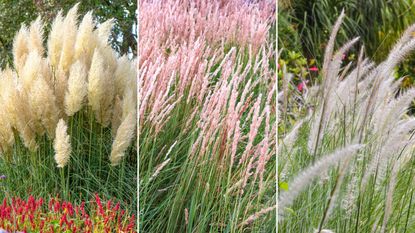Planting ornamental grasses make a big impact in the backyard, with many varieties hardy and easy to grow, providing year-round interest.
From tall and wispy varieties that sway beautifully in the wind to low-growing grasses perfect for ground cover and rock gardens, there are so many types to choose from for an instant effect. We've asked gardening experts why they love using them and for their favorite ones.
If you're looking for the best backyard ideas and want to go for a rustic, low-maintenance look, ornamental grasses are the perfect choice.
Everything you need to know about planting ornamental grasses
Planting ornamental grasses couldn't be easier to incorporate into your borders, whether you're looking for small backyard ideas or a large one.
1. Big bluestem grass

If you’re looking for backyard privacy ideas, choosing tall grasses like the big bluestem is the way to go.
“This tall, narrow native bunchgrass attracts pollinators without overwhelming your lawn aesthetic,” says Jeremy Yamaguchi, CEO of Lawn Love.
He continues, “It’s a host plant for butterfly larvae, and its nectar is a vital food source for the common wood nymph.”
As well as this they have a long lifespan, making them ideal for wildflower gardens and meadows, cottage gardens, and privacy hedging. Simply plant the seeds (such as these Seedville Big Bluestem Grass seeds from Walmart) and you'll be ready to go.
Jeremy says, “Their long, sturdy roots (which can extend as deep as 10 feet) take time to establish, but once they’re healthy and strong they’ll stand strong against erosion.”
They also change with the seasons, with the turkey foot-shaped flowers bloom in fall changing from red to burgundy as cold weather approaches. “Leaves and stems turn orange and copper-red to give your lawn a boost of winter interest,” he adds.
2. Feather reed grass
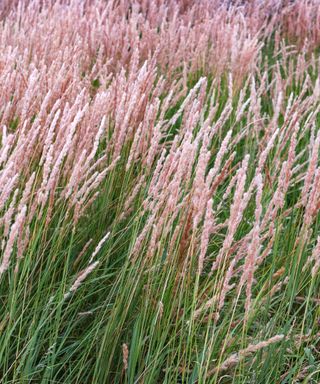
Go for a rustic backyard look with breezy feather reed grass, which always looks super pretty.
“Feather reed grass is a tall, feathery grass that can reach heights of eight feet and grows in clumps,” explains Dan Bailey, president of WikiLawn Tampa Lawn Care.
He suggests planting this (you can use seeds like these Seedville Feather Reed Seeds from Walmart) in moist, well-draining soil with full sun reaching it, and watering it deeply once a week or more often if it’s extra hot out.
“I also recommend fertilizing it in early spring with a balanced fertilizer (Walmart shoppers love this Expert Gardener Fertilizer),” Dan adds.
3. Pampas grass
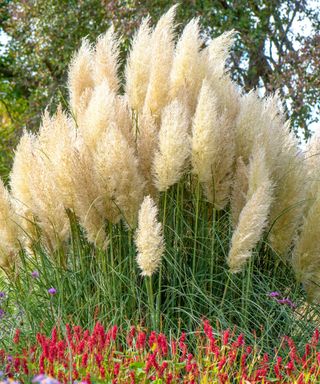
You might have a spot in your backyard you need to give some TLC to, even if it is stubborn and doesn’t like being planted in.
“If you have a spot in your yard where nothing will grow, try pampas grass,” suggests Ryan Farley, CEO of LawnStarter.
“This stuff has beautiful ornamental tufts, and it's incredibly tolerant of drought or poor soil conditions,” he adds. We like these pretty Hirt's Gardens Pampas Grass Plants from Walmart which you can grow yourself.
You can also trim it and make it into pampas grass decor you can display in your home too.
4. Maiden grass

If you live in an area that gets plenty of rainfall or have damp, low-lying areas in your lawn, Ryan says maiden grass is the way to go.
Dan adds, “It has long, narrow blades and in the fall, it produces fluffy, silver-white flowers that are truly beautiful.”
For example, this Florida Foliage Maiden Grass Morning Light from Walmart is elegant, sun-loving, and drought resistant.
5. Japanese forest grass
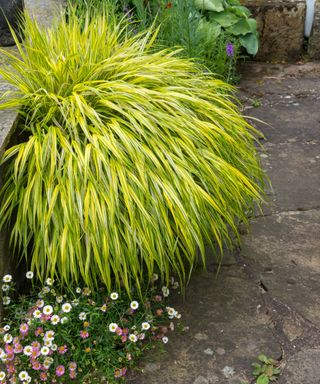
For those looking for big and beautiful grass with a tropical vibe, Japanese forest grass could be a great option.
“Japanese forest grass is distinguished by its cascading form and bright green foliage,” says Ross Hulstein, landscaper at Enviroscapes.
“Plant in moist, well-drained soil in partial to full shade and keep soil consistently moist, especially during hot and dry periods,” he adds.
He suggests dividing it into clumps in order every few years to prevent overcrowding. If you haven't got any yet, this Sacred Roots Japanese Forest Grass Kit from Walmart has everything you need to get started.
How to grow ornamental grasses
Most grasses will need a sunny spot in well-drained soil and don't need much maintenance.
Simply dig holes exactly the depth of the potted plants you've bought and plant so that the base of the plant is level with the ground.
“One of the real advantages of ornamental grasses is that, as long as you choose grasses that are a good fit for your climate and yard, they're incredibly low-maintenance plants,” says Ryan.
He continues, “Most won't need much watering or mowing, outside of cutting down the dead growth in late fall or early spring. The trick is finding the right kind.”
You can always learn how to mow grass if you aren’t confident in doing so.
What to consider when choosing ornamental grasses
Ornamental grasses come in a dizzying range of varieties; some grow tall (if you see 'gigantea' in the tile, it's guaranteed to be a tall-growing type), while others stay compact and close to the ground.
To really make the most of them in your borders, experiment with a few tall ones in the background and the low-growing ones in the foreground.
It's also worth noting that while many ornamental grasses are deciduous and will completely die back for the winter, others are evergreen, providing invaluable interest for fall and winter borders.
Helpful ornamental grass buys
If you want to get started on planting and growing ornamental grass, these buys will help you do just that.
The prices below were correct at the time of publishing this article.

Size (in.): W4.33 x L7.09
Made from: Stainless steel
Price: $8.50
These sage green flower scissors are handy for trimming back your fine ornamental grass blades.

Size (in.): H3.2 x D4
Made from: Plastic
Price: $11.99
Stock up on these small nursery pots if you're growing seeds from scratch, as you can nurture them and then move them to bigger ground.
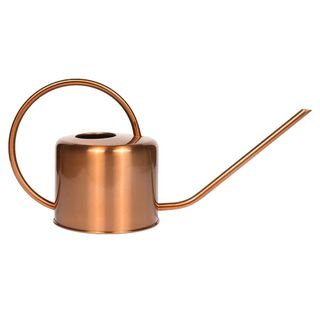
Size (in.): H8 x W15 x D5
Made from: Steel, copper
Price: $35
This functional and super stylish metal watering can that's perfect for keeping your ornamental grass (and indoor plants and) hydrated.
By learning how to plant ornamental grasses, you can create a space in your backyard that feels calm and relaxing, thanks to the easy and breezy blades.
If you’re now feeling all green-fingered, these are the best flowers to grow in pots both indoors and outdoors. For those with inside space only, these are the best plants for indoor gardens.
